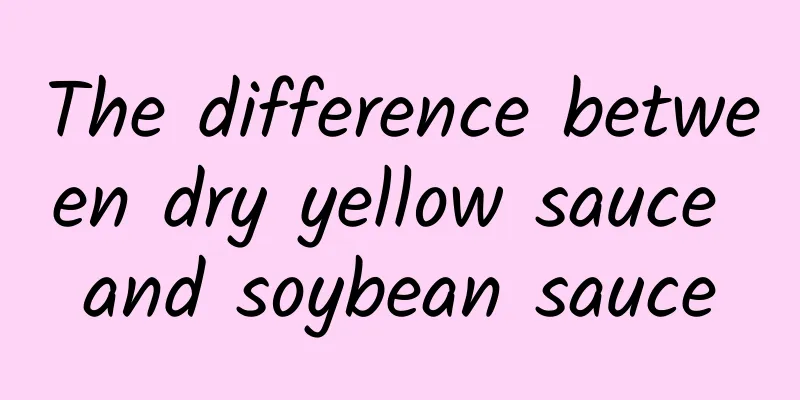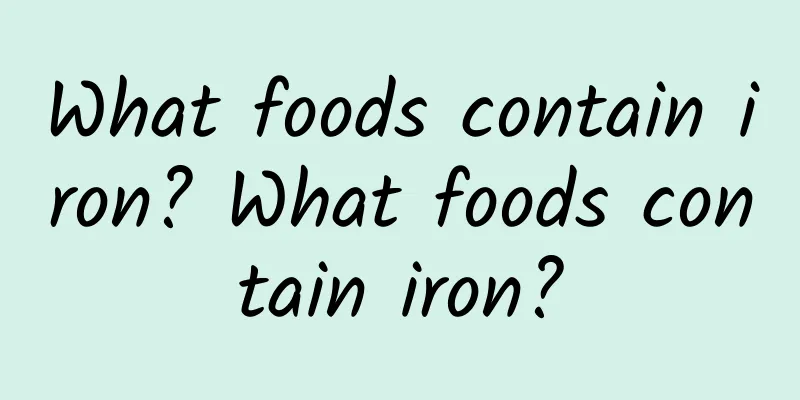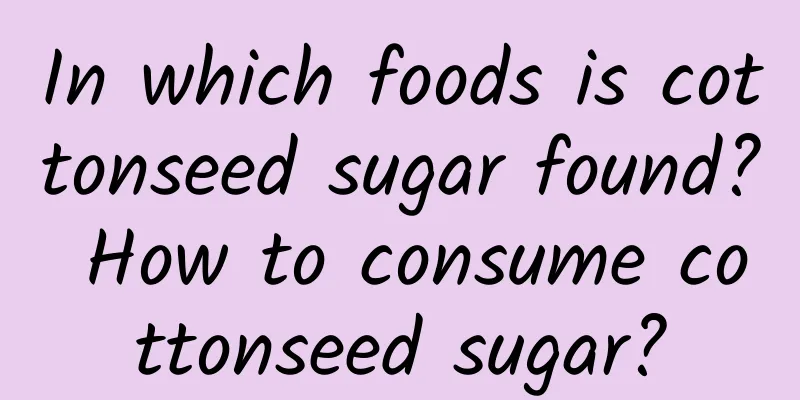The difference between dry yellow sauce and soybean sauce

|
Dry yellow paste and soybean paste are both common sauces in life, and they are both condiments made with soybeans as the main ingredient. They have a strong bean flavor, but there are obvious differences in texture and taste. I will write down the differences between them later so that everyone can easily understand the differences between dry yellow paste and soybean paste. 1. The difference between dry yellow paste and soybean paste The difference between dry yellow paste and soybean paste mainly lies in their appearance. Dry yellow paste is mostly dry solid, and its texture is relatively pure, with no other impurities visible at all. Soybean paste is a thick paste, and you can tell that it contains a lot of soybeans from its appearance. This is the obvious difference between them. 2. The difference between eating dry yellow paste and soybean paste There is also an obvious difference in eating dry yellow paste and soybean paste. When you want to eat dry yellow paste, you must add water to dilute it before eating, while soybean paste can be eaten directly. In addition, dry yellow paste is mostly used for marinating some meat ingredients, and it is more often used as a seasoning. In addition to being eaten directly, soybean paste can also be made into fried sauce, which is the main ingredient for people's fried noodles. 3. The difference in color between dry yellow paste and soybean paste There is also a clear difference in color between dry yellow bean paste and soybean paste. Good quality soybean paste is mostly brown, bright and shiny, with moderate viscosity, and salty and sweet taste. Dry yellow bean paste is mostly in solid form, with a reddish-yellow appearance and a sweet aroma. It will not turn black no matter how it is stored. When you break it by hand, you can see the white stubble, and the inside is red and firm, with an attractive sauce aroma. 4. The processing methods of dry yellow paste and soybean paste are different Although the main ingredients of dry yellow paste and soybean paste are soybeans, their processing methods are different. When processing dry yellow paste, the soybeans need to be fried and then ground into fine powder, and then fermented and adjusted. Except for table salt, almost no other ingredients are added in the whole process. Soybean paste is different. Although it is also a sauce made from fermented soybeans, a large amount of spices will be added during the processing, which makes the finished soybean paste have a strong spice smell. |
<<: Nutritional value of corn kernel skin
>>: How to boil mung bean water The correct way to boil mung bean water
Recommend
What are the vegetables with very high nutritional value? Which vegetables are more nutritious?
Here are some vegetables with high nutritional va...
What are the four gentlemen of flowers?
Beautiful flowers are something that everyone lik...
Snake Bean Varieties and Uses
Do you know about snake beans? Today I will intro...
How is Asprey? Asprey review and website information
Asprey_What is Asprey? Asprey International Limite...
Why is yellow pomelo so bitter? What nutrients does yellow pomelo have?
Red-heart grapefruit and white-heart grapefruit a...
How to use store-bought pasta sauce How to use canned pasta sauce
Many people see that there are canned pasta sauce...
How to eat yellow peel fruit
Kumquat is a southern fruit. From the pictures of...
The easiest way to make fried milk
Fried milk is often sold in snack streets across ...
The efficacy and function of Bufona
Bufuna, also known as black tiger, is a plant of ...
Korean red bean porridge recipe steps and ingredients
Health porridge is a very popular diet nowadays. ...
How is Sports Japan? Sports Japan reviews and website information
What is Sports Japan? Sports Japan (Sponichi Annex...
What are the benefits of drinking sesame soaked in water
Sesame is a food ingredient with particularly hig...
Introduction to kiwi fruit cooking and nutritional knowledge
I believe everyone is familiar with kiwi fruit. L...
The miraculous effects of eating an avocado every day
Avocado is a common fruit in tropical regions. Th...
How is the South Korean government? South Korean government reviews and website information
What is the Korean government website? The Republi...









